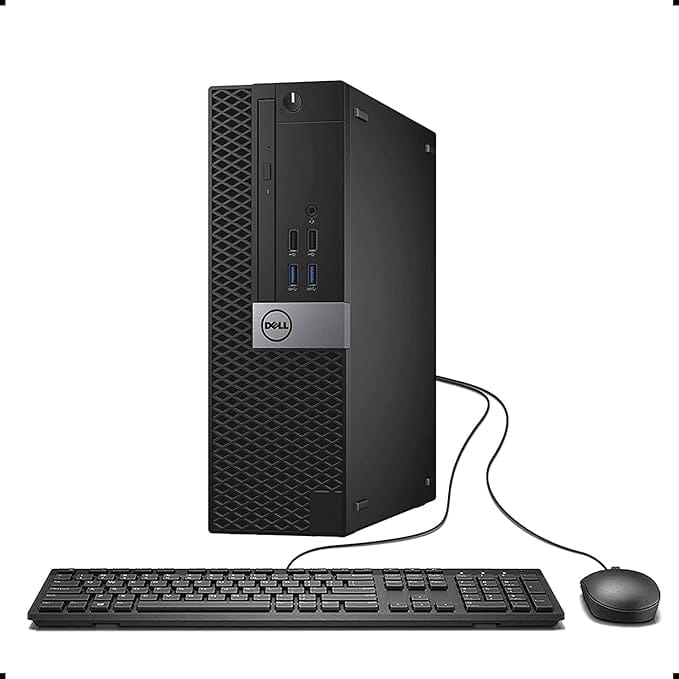Best Budget Home Server to Start Self-Hosting (2025 Edition)
So, you want to build a home server, maybe to self-host a few apps, run a media server, explore Docker, or just take control of your own data. But you don’t have an old gaming PC lying around, and you’re not trying to spend a fortune to get started. Don’t worry, you’re in the right place.
With a modest budget and the right components, you can build a multi-purpose server that runs 24/7, sips power, and gives you loads of flexibility.
📑 Table of Contents
- 🤔 What Can a Home Server Actually Do?
- 🧱 What Kind of Hardware Do You Actually Need?
- 💻 Budget Home Server Build: Refurbished Mini PC
- 🔧 Recommended Add-ons
- 🧩 Final Thoughts
🤔 What Can a Home Server Actually Do?
A home server can handle all sorts of useful tasks. Here are just a few popular use cases:
-
🛡️ Network-wide ad blocker
Run something like Pi-hole to block ads, trackers, and malicious domains across all devices. -
📺 Media streaming hub
Use Plex or Jellyfin in combination with Radarr and Sonarr to stream your own library of movies, shows, or music. -
☁️ Private cloud storage
Host your own Dropbox-like setup with Nextcloud to sync files, calendars, and notes securely. -
🏠 Smart home brain
Set up Home Assistant to control and automate all your smart devices, cloud-free. -
🧪 Tinker playground
Learn Linux, Docker, VPNs, or reverse proxies in a safe, local sandbox. -
✍️ Self-hosted blog
Or host your own blog, like I’m doing here, using something like Ghost or WordPress.
And the best part? You can do all of that on a single, well-chosen budget server, even if you’ve never set one up before.
🧱 What Kind of Hardware Do You Actually Need?
You don’t need enterprise-grade gear. You need something that balances power, expandability, and energy efficiency, while keeping the price under control.
| Component | Why It Matters | Minimum Recommended Spec |
|---|---|---|
| CPU | Powers apps and containers | Intel i5 (6th gen+) or Ryzen 3 |
| RAM | More RAM = more Docker containers | 8GB DDR4 (upgradeable to 16GB is ideal) |
| System SSD | Fast boot and app response | 120–240GB SATA SSD |
| Storage HDD | Bulk media and backups | 1–2TB internal or USB HDD |
| Networking | Stable file/media transfers | Gigabit Ethernet |
| Power draw | Saves money 24/7 | Idle < 15W if possible |
💡 Avoid ultra-low-end CPUs like Intel Atom or Celeron N — they’ll bottleneck quickly.
This hardware will comfortably run:
- A Plex or Jellyfin media server (with direct play or light transcoding)
- A self-hosted cloud (Nextcloud)
- Home Assistant for smart home automation
- Pi-hole for ad blocking
- Multiple Docker containers or even VMs using Proxmox
And the best part? You can find this kind of setup — ready to go — for only around $200. Let’s take a look at that next.
💻 Budget Home Server Build: Refurbished Mini PC
If you don’t have an old PC lying around and want something reliable, quiet, and affordable, a refurbished mini PC is one of the best ways to get started with a home server.
These small-form machines were originally built for businesses — meaning they’re well-made, designed to run 24/7, and now available at great prices on the used market.
They’re also:
🧱 Compact — Fits easily on a shelf or desk
🔇 Quiet — Most are nearly silent
⚡ Efficient — Uses far less power than a full desktop
🧩 Upgradeable — Many support extra RAM and storage
Mini PCs come in a few flavors:
Tiny/Micro PCs — Ultra-compact (~1 liter), like Lenovo ThinkCentre Tiny or Dell Micro
SFF (Small Form Factor) — Slightly larger (~9–10 liters), but more expandable
🏆 Recommended: Dell OptiPlex SFF (Small Form Factor)
If you're looking for a great balance of price, performance, and upgrade flexibility, Dell's OptiPlex Small Form Factor (SFF) line is a solid go-to option.
These machines are slightly larger than ultra-compact PCs, but that extra space brings real benefits. OptiPlex SFF systems are known for being reliable, quiet, and easy to upgrade — making them perfect for a variety of home or office projects.
Why they’re a great choice:
- Plenty of power for media streaming, home automation, and lightweight server tasks (like Docker)
- Tool-free access for easy upgrades (RAM, SSD, HDD)
- Built-in Gigabit Ethernet
- Support for full-size 3.5" hard drives
- PCIe slots for expandability (e.g., additional USB ports or network cards)
🛒 Example listing:
Dell OptiPlex 7040 SFF – around $130–$150
Dell OptiPlex 9020 SFF – around $110-$130

🔧 Recommended Add-ons
| Item | Purpose | Example Product | Est. Price |
|---|---|---|---|
| 1TB HDD | Store media, backups | WD Red Plus NAS 3.5" | ~$80 |
| USB Stick (32GB) | OS installer (Ubuntu Server) | SanDisk Ultra USB 3.0 | ~$8 |
🧩 Final Thoughts
If you’ve got an old PC lying around, that’s the best place to start, free and effective.
But if you don’t, a refurbished Dell OptiPlex mini or SFF desktop is a great alternative. It’s affordable, quiet, upgradeable, and perfect for running things like Plex, Nextcloud, Home Assistant, and more.